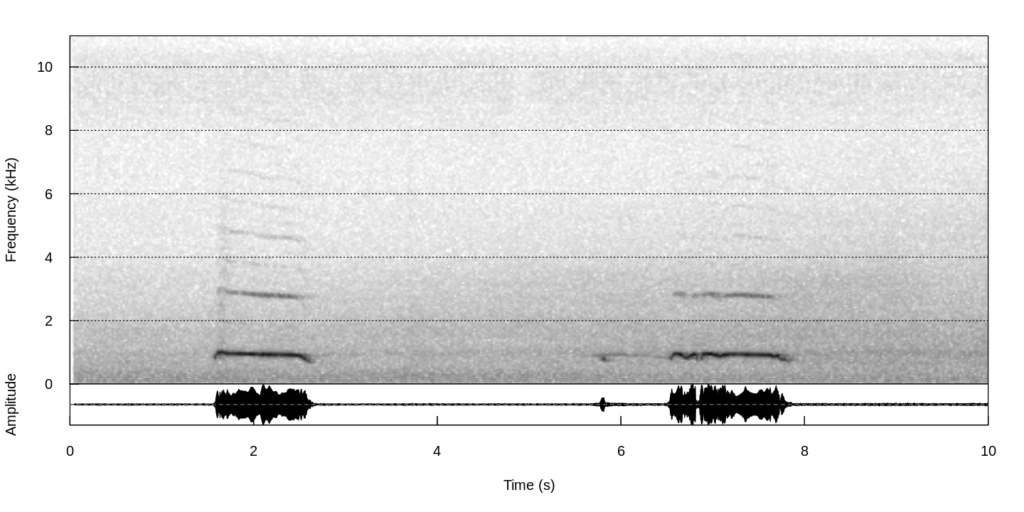Spectrograms are a common visualization of sound data. Visualizing sound data can be useful when doing a presentation or for publication. Additionally, machine learning algorithms for classifying sound data generally use spectrograms as their starting point, instead of the sound data itself, as many advanced algorithnms for classifying images are readily available. The example uses the R packages warbleR (Araya-Salas & Smith-Vidaurre, 2017), seewave (Sueur, Aubin, Simonis, 2008) and tuneR (Ligges et al., 2018).
This example draws the spectrogram of the call of a tawny owl (Strix aluco).

Here is the code
library(warbleR) # read the file url <- "https://www.xeno-canto.org/494801/download" s1<-read_wave(url) # draw the first 10 seconds of the sound file spectro( s1, palette=reverse.gray.colors.1, scale=FALSE, osc=TRUE, collevels=seq(-100,0,1), fastdisp=FALSE, tlim=c(0,10) )
References
Araya-Salas, M. and Smith-Vidaurre, G. (2017), warbleR: an r package to streamline analysis of animal acoustic signals. Methods Ecol Evol. 8, 184-191
Ligges, U, Krey, S, Mersmann, O, and Schnackenberg, S (2018). tuneR: Analysis of Music and Speech. URL: https://CRAN.R-project.org/package=tuneR
Sueur J, Aubin T, Simonis C (2008). seewave: a free modular tool for sound analysis and synthesis. Bioacoustics, 18: 213-226